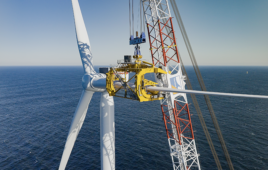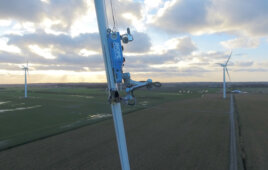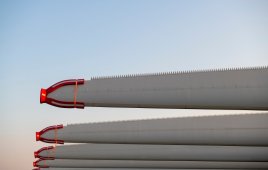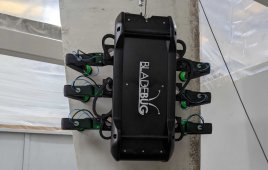
The Vert-X 22, from Switzerland-based Contelec, a division of the Siedle Group, is exclusively distributed by Novotechnik, Southborough, Mass. The noncontacting rotational sensor provides 1 kHz sample rate.
Wind power is big in Spain. As of April 2008, up to 40% of the country’s total power was generated by wind turbines. Credit goes to the efficiency of the turbines which glean more energy from the wind thanks to a small blade-pitch sensor, the Vert-X 22 from Swiss-based Contelec, a division of the Siedle Group. The sensor is exclusively distributed by Novotechnik, Southborough, Mass. Contelec engineers partnered with Spanish wind engineers to make best use of the sensor as it assists controlling blade pitch, which maintains a near constant rotor speed.
The sensor has roots in an R&D program for a 20-kW turbine project funded by Japan’s Science and Technology Agency. Before building the full-sized version, the R&D team built a small version of the pitch control for a 1-kW model. The design was improved through repeated tests in a low speed wind tunnel and later in field tests. These highlighted an application for an electromagnetic proportional valve that would assist the hydraulic control as it adjusted blade pitch. The device also allowed reducing variation in rotor speed. Several hundred wind turbines are using such hydraulic pitch controls. A few additional sensor features include:
• Noncontacting measurements simplify retrofits.
• Compact size, about 76-mm long and 22.2-mm dia.
• Absolute angle measurement and a continuous 360°
• Long life of 360 million cycles
• Resolution of ±0.09°
• User programmable with a nonlinear output capability.
Producing the most power possible without large variations in rotational speed allows predictable power generation while maximizing component life. Turbine purchasers the world over will be looking for designs with maximum efficiency. Working with component manufacturers that have been exposed to the market can help make best equipment choices.
Filed Under: Blades, Sensors




